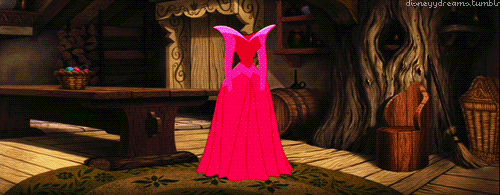Once Upon A Dream

On January 29th, 1959, one of the greatest visual cinematic feasts was released in theaters nationwide, and marked the end of a remarkable era for animation. Nearly nine years in production and perhaps the costliest animated film made to that date, Walt Disney's masterpiece Sleeping Beauty features some of the most stunning artistry by the women of Disney Animation!
The memorable voice work of Aurora provided by our beloved Mary Costa; the Good Fairies voiced by Verna Felton, Barbara Jo Allen and Barbara Luddy; and the villainous Maleficent voiced by the great Eleanor Audley!

Animators, including: Jane Shattuck-Baer, Liz Case Zwicker, Jane Fowler-Boyd, Retta Davidson, Mary Anderson, Fran Marr, Doris Collins, Eva Schneider, Bea Tamargo, Sylvia Fry Mattinson, Lois Bloomquist and many more, wielded pencils to design and animate these beloved characters.
Helene Stanley provided inspiration for the animators, thanks to a definitive costume created by Alice Estes Davis. Thelma Witmer's visual magic on Backgrounds; Katherine Kerwin, Ruthie Tompson and Mimi Thornton in Layout and Camera; and so many others throughout the production pipeline.

But it was Grace Bailey's teams of Ink & Paint who pulled out all the stops on Sleeping Beauty—from the teams of the Studio's Paint Lab, Color Model Supervisors, Painters, Checkers and Inkers. Some of the most remarkable artistry ever featured in animation is within the masterful hand-inking throughout this film. Premium Inkers were a valued and vital part of the artistry within animation, yet the staggering labor costs for the lengthy production of Sleeping Beauty were prohibitive. If animation were to continue, the studio needed a cost-effective approach to production. The advent of Xerography was the answer, yet at the sacrifice of the calligraphic mastery of Disney's Premium Inkers, including Eleanor Dahlen, Maria Fenyvesi, Lee Guttman, Joyce Carlson, Margaret Trindade, and so many others. After completing a tour de force of visual mastery, these ladies were the first invited to train and transition into Xerography. A small handful of Inkers were retained for minimal needs, but the rest of the Inkers who chose to leave at the end of production were placed at other studios by Grace Bailey and her staff. No one was laid-off.
Sleeping Beauty would mark the last of the hand-inked animated films and Xerography ensured animation would continue. Here's to the ladies who's contributions defined this visual masterpiece. Brava!




















